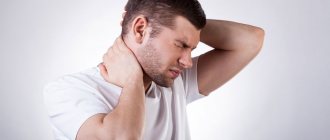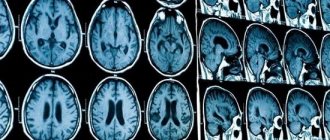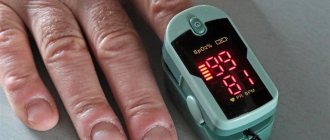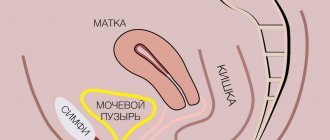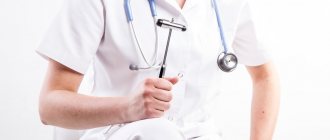Migraine is a type of headache characterized by repeated intense attacks. In addition, migraine is accompanied by a combination of various neurological, autonomic and gastrointestinal symptoms. According to statistics, the disease ranks 6th among diseases leading to a decrease in quality of life.
Migraine attacks are most often diagnosed in women. The onset of the disease occurs at the age of 10-20 years. The maximum number of attacks is reached by 30-45 years.
Causes of migraine
The exact causes of migraine symptoms have not yet been studied. The main role is played by hereditary burden. There are provoking factors, the presence of which contributes to the appearance of migraine headaches. These include:
- emotional stress;
- menses;
- hunger;
- insomnia;
- weather change;
- excessive sleep;
- food products (chocolate, citrus fruits, bananas, fatty cheeses);
- alcohol.
Hemicrania in children
Migraines in children appear in most cases due to overwork due to heavy workload at school. Another cause is hormonal changes due to puberty. If migraine occurs more often in women than in men, then in childhood, on the contrary, boys suffer from migraine attacks more often. It is very difficult to diagnose migraine in young children who cannot formulate their complaints clearly. Migraine medications for children and adolescents are prescribed based on examination data.
Migraine classification
ICD-10 identifies the following forms of migraine:
- without aura;
- with an aura;
- chronic.
In addition, migraine can have a complicated course and be regarded as an episodic syndrome.
Migraine without aura
It is regarded as a simple form of the disease. Accompanied by recurring headache and typical associated symptoms.
Migraine with aura
An aura is a cerebral symptom that occurs shortly before a headache occurs. The following subtypes of migraine with aura are distinguished:
- with a typical aura - expressed by sensitive, visual, speech disturbances. The duration of this form of the disease is 1 hour;
- with brainstem aura – characterized by dizziness, tinnitus, impaired consciousness, dysarthria, diplopia, ataxia. There is no muscle weakness;
- hemiplegic – accompanied by reversible muscle weakness and symptoms characteristic of simple migraine;
- retinal – characterized by darkening of the eyes, flickering stripes or spots.
Chronic migraine
In chronic migraine, headaches occur daily or almost daily. The diagnosis is made when signs of the disease are present for more than 2 weeks per month for 3-4 months. Chronic migraine can occur with or without an aura.
Migraine stages
Migraine attacks occur in several stages. Among them:
- Prodrome. In other words, harbingers of headaches. The occurrence of these symptoms is observed in 50% of patients suffering from migraine. Pathological signs include irritability, emotional lability, weakness, thirst, swelling, muscle tension in the neck and back of the head. These symptoms may occur several hours or days before the attack.
- Migraine aura. This is a set of neurological symptoms that occur immediately before a migraine attack. In accordance with this, violations are distinguished:
- visual (flashes or colored lines, loss of areas of vision;
- motor;
- sensitive (numbness, tingling);
- speech.
The intensity of the listed migraine symptoms gradually increases. The duration of a migraine aura can be 1 hour.
- Stage of headache. Signs of a migraine are an intense headache that appears on one side (less often bilateral). Its severity increases even with moderate physical activity. A migraine attack is accompanied by nausea, vomiting, and increased sensitivity to light and sounds. The duration of headache without appropriate therapy can reach 3 days.
- Postdrome. The stage that occurs after the headache has subsided. Symptoms of postdrome include pale skin, yawning, irritability, and fatigue. These symptoms of migraine may persist for 2 days.
Risk factors
Risk factors for hemicrania are:
- genetic predisposition;
- age – most often the disease occurs in patients 30-39 years old;
- frequent stressful situations;
- some food products, including those of artificial origin or low quality;
- fasting or irregular, poor nutrition (diet);
- changing sleep patterns;
- weather changes or moving to a different climate zone;
- intense physical activity;
- taking medications.
Diagnosis of migraine
The diagnosis is made in the presence of typical complaints and a characteristic medical history. At the initial consultation, the neurologist conducts a thorough survey. During this, the time of onset and frequency of headaches, the duration of symptoms, accompanying symptoms, and the presence of hereditary burden are determined. In addition, the doctor needs to clarify the medications that relieve pain, if any. Additional methods for diagnosing migraine are:
- REG (rheoencephalography);
- EEG (electroencephalogram);
- Ultrasound doppler scanning (ultrasound duplex scanning of cerebral vessels).
They are prescribed only if a symptomatic migraine is suspected. Otherwise, the above methods have no diagnostic value, since they do not reflect any specific changes.
When making a diagnosis, it is recommended to rely on diagnostic criteria. Let's consider the criteria characteristic of the 2 most common forms of migraine - with and without aura.
- With aura:
- the presence of at least 2 attacks that meet diagnostic criteria;
- presence of at least two symptoms and the following:
- visual disturbances or unilateral sensory impairment;
- one of the clinical signs of aura develops within at least 5 minutes;
- The duration of each symptom is at least 5 minutes.
- headache is not associated with other disorders;
- headache is accompanied by at least one of the following symptoms:
- visual (reversible visual impairment, flickering spots or stripes);
- sensitive (tingling, numbness);
- speech (reversible speech disorders).
- Without aura:
- the presence of at least 5 attacks that meet diagnostic criteria;
- the average duration of headache is 4-72 hours;
- headache is accompanied by at least one of the following symptoms:
- vomit;
- nausea;
- hypersensitivity to light;
- hypersensitivity to sounds.
- headache is not associated with other causes;
- headache is characterized by at least two of the following:
- one-sided;
- pulsating;
- intense;
- worsens with physical activity.
How to make an appointment with a neurologist
JSC "Medicine" (academician Roitberg's clinic) in Moscow offers European-level services for the diagnosis, treatment and prevention of migraine. To receive highly qualified medical care, you must make an appointment with a neurologist who will conduct an examination and a comprehensive medical examination.
To make an appointment with a specialist, use one of the following methods:
- quick registration form on the main page of the clinic’s website;
- by phone 24 hours a day +7 (495) 775-73-60;
- using a mobile application.
The clinic is located in the center of Moscow at 2nd Tverskoy-Yamskaya lane, 10, a five-minute walk from the Mayakovskaya metro station.
JSC "Medicine" (clinic of academician Roitberg) in Moscow also offers emergency call services around the clock by calling +7.
Migraine treatment
The main goal of treatment for migraine attacks is to alleviate the course of the disease, improve the quality of life and reduce the risk of chronicity of the disease. Treatment includes:
- relief of acute pain syndrome;
- relapse prevention.
Treatment of acute migraine attacks
The following drugs are used to relieve pain:
- Nonsteroidal anti-inflammatory drugs (ibuprofen, ketorolac, diclofenac, acetylsalicylic acid, paracetamol). It is important to remember about the possibility of developing an overuse headache. It occurs due to excessive use of painkillers.
- Antiemetics. Prescribed due to the presence of severe atony of the stomach and intestines, which accompanies migraine. Antiemetic drugs stimulate intestinal motility and normalize absorption.
- Triptans. They are the “gold standard” of migraine therapy. The drugs block the release of pain neuropeptides. The effect occurs 20-30 minutes after ingestion.
It is recommended to start therapeutic measures as early as possible. It is advisable to take the drug within the first 30 minutes after the onset of the attack. Therapy is selected individually by the attending physician.
Prevention of migraine recurrence
Prevention of relapse is indicated for patients suffering from chronic and frequent episodic migraines. This type of therapy adheres to the following goals:
- reduction in the number and severity of migraine symptoms;
- reducing the frequency of using medications to relieve headaches;
- improving quality of life.
Indications for prescribing preventive therapy are:
- presence of migraine attacks at least 3 times a month;
- duration of headache for at least 3 days;
- symptoms cause disorientation;
- concomitant conditions that reduce quality of life (depression, dyssomnia);
- risk of developing permanent neurological symptoms.
The duration of the therapeutic course for migraine is selected on an individual basis. Preventive therapy involves long-term use of medications. On average it takes from 2 to 6 months. In this way, it is possible to minimize the number of migraine exacerbations. For the purpose of prevention, the following drugs are used:
- non-steroidal anti-inflammatory drugs;
- anticonvulsants;
- antidepressants;
- calcium channel blockers;
- beta blockers.
Migraine treatment begins with minimal doses. If ineffective, the dosage can be gradually increased. This way, the risk of side effects is minimized. It is recommended to start migraine prevention with monotherapy. If there is no therapeutic effect within 2-3 months, the drug can be replaced or enhanced with another drug. When choosing a drug, it is necessary to take into account the presence of concomitant conditions.
Hemicrania in women
Migraine is diagnosed, the symptoms of which in women depend on the cause much more often than in men. Among the main causes of attacks in women:
- changes in vascular tone under the influence of hormonal levels changing throughout the menstrual cycle. For some women, migraine pain occurs during bleeding, for others during ovulation. Migraine medication is prescribed taking into account the patient’s hormonal background and her age;
- pregnancy, during which the load on the pregnant woman’s circulatory system increases significantly. Treatment of migraine in pregnant women requires caution when choosing medications;
- menopause, with the onset of which the ratio of hormones in a woman’s body changes significantly.
Since migraine, the symptoms and treatment of which in women depend on the individual characteristics of the body, can appear unexpectedly, doctors recommend taking preventive measures. Prevention using traditional medicine, massage and other types of therapeutic effects can significantly reduce the risk of an attack.
Non-drug methods of prevention
A migraine attack can be prevented not only with the help of medications. Cognitive behavioral therapy can reduce stress levels and correct pain syndrome. Through sessions with a doctor, patients are able to learn psychological and muscle relaxation techniques. Cognitive-behavioral therapy is indicated for persons with signs of emotional-personal and hypochondriacal disorders. In severe cases, observation by a psychiatrist is necessary.
Neck massage, acupuncture, therapeutic exercises and manual therapy have a positive effect. In the absence of effect from drugs, the use of various instrumental methods is indicated. Among them are stimulation of the occipital, vagus and supraorbital nerves.
Forecast
With timely consultation with a doctor and selection of adequate therapy, the prognosis for life is favorable. Patients are under dynamic observation by a doctor for 4-12 months after diagnosis. Further visits take place once every 2-3 months to assess the correctness of the selected therapy. Migraine attacks must be prevented in a timely manner. To do this, it is recommended to modify lifestyle, avoid provoking factors, and follow prescribed therapy.
At the multidisciplinary clinic “Zdorovye”, qualified neurologists are involved in the diagnosis and treatment of migraines of any severity. The center is equipped with modern equipment that allows differential diagnosis of various conditions, the course of which is similar to the symptoms of migraine. Appointments can be made by telephone. You can also leave a request on the official website. The administrator will contact you to clarify the details of the recording.

